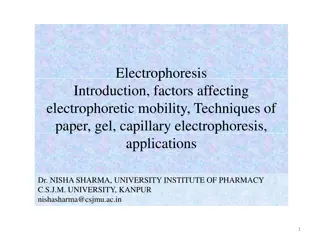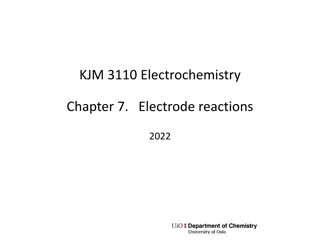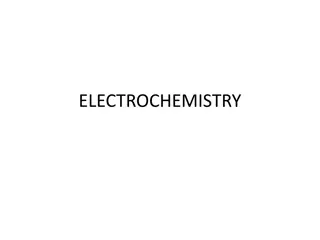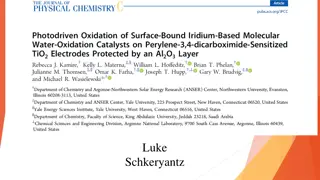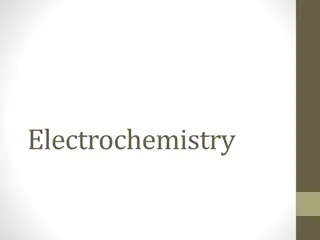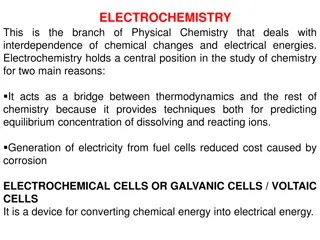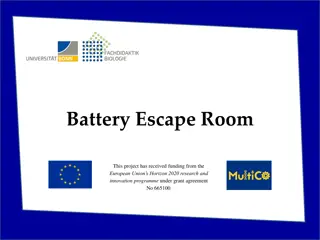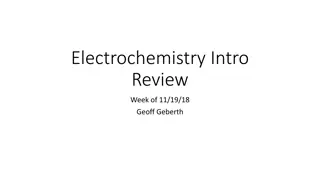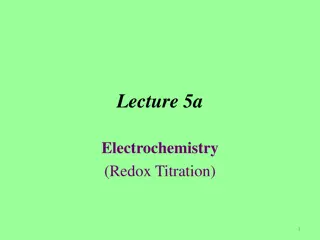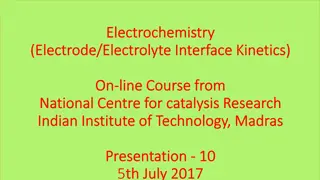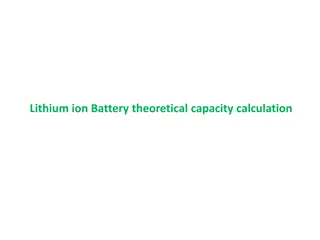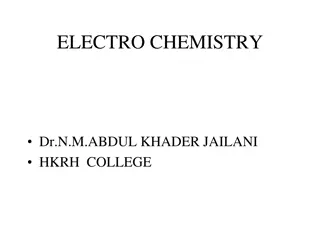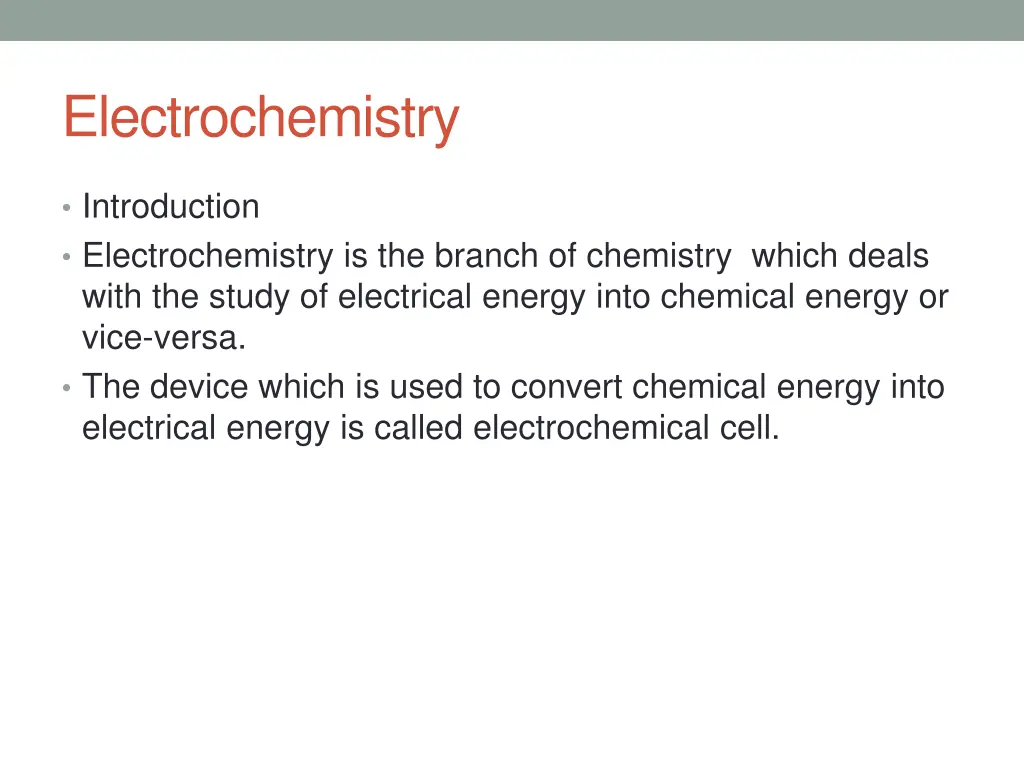
Understanding Electrochemistry Basics
Explore the fundamental concepts of electrochemistry, including types of electrochemical cells, electrode potential, cell potential, Nernst equation, Gibbs free energy change, electrolysis, and Faraday's laws. Learn how electrical energy can be converted into chemical energy and vice versa in the field of electrochemistry.
Download Presentation

Please find below an Image/Link to download the presentation.
The content on the website is provided AS IS for your information and personal use only. It may not be sold, licensed, or shared on other websites without obtaining consent from the author. If you encounter any issues during the download, it is possible that the publisher has removed the file from their server.
You are allowed to download the files provided on this website for personal or commercial use, subject to the condition that they are used lawfully. All files are the property of their respective owners.
The content on the website is provided AS IS for your information and personal use only. It may not be sold, licensed, or shared on other websites without obtaining consent from the author.
E N D
Presentation Transcript
Electrochemistry Introduction Electrochemistry is the branch of chemistry which deals with the study of electrical energy into chemical energy or vice-versa. The device which is used to convert chemical energy into electrical energy is called electrochemical cell.
Types of Electrochemical Cell Galvanic/Voltaic Cell Electrolytic Cell Conversion of chemical energy into electrical energy e.g.Daniel Cell Conversion of electrical energy into chemical energy Electrolysis of H2O
Electrode Potential The potential difference which generated due to the electrodes present in the cell is called as electrode potential. Electrode potential is of two types oxidation potential and reduction potential. The tendency of an electrode to lose electrons is called oxidation potential, while tendency to gain electrons is called reduction potential.
Cell Potential or EMF EMF of a cell is a measure of the free energy change which determines the tendency of the overall reaction to occur. If the EMF comes out to be positive, the reaction takes place.
Nernst Equation Dependence of electrode potential and EMF on concentration and temperature. For electrode potential;
Gibbs Free Energy Change Gibbs free energy change in an electrochemical reaction can be expressed as the equivalent of the potential difference.
Electrolysis The process of decomposition of an electrolyte by the passage of electricity through its aqueous solution or molten state. Electrodes used in the electrolysis of different electrolytes are of two types, inert electrodes and active electrodes
Faraday First Law of Electrolysis The mass of primary products formed at an electrode by electrolysis is directly proportional to the quantity of electricity passed.
Faraday Second Law of Electrolysis The masses of different primary products formed by equal amounts of electricity are proportional to the ratio of molar mass to the number of electrons involved with a particular reaction.
Conductance In relation to electrolytes, the term conductance (C) is used more frequently than resistance. Conductance implies the case with which electric current can flow through a conductor. It is defined as the reciprocal of resistance.
Types of Conductance Specific Conductance Specific conductance = Conductance x Cell constant Equivalent Conductance Equivalent conductance = (Molar conductance) / n Where n = (Molecular mass)/(Equivalent mass) Molar Conductance
Kohlrausch Law The molar conductivity of an electrolyte at infinite dilution can be expressed as the sum of the ionic conductivities of cations and anions each multiplied by the number of ions present in one formula unit of the electrolyte.
Applications of Kohlrausch Law 1. In the calculation of molar conductivity at infinite dilution for a weak electrolyte 2. In the calculation of the degree of dissociation.
Applications of Kohlrausch Law 3. In the calculation of solubility of a sparingly soluble salt. As the solution is saturated but infinitely dilute. Molarity = solubility Hence,
Applications of Kohlrausch Law Where u are ionic mobilities at infinite dilution. Electrochemistry is the study of chemical processes which lead to electrons moving. This movement of electrons is called electricity, which can be generated in a reaction known as an oxidation-reduction reaction by electrons from one element to another. THE END


